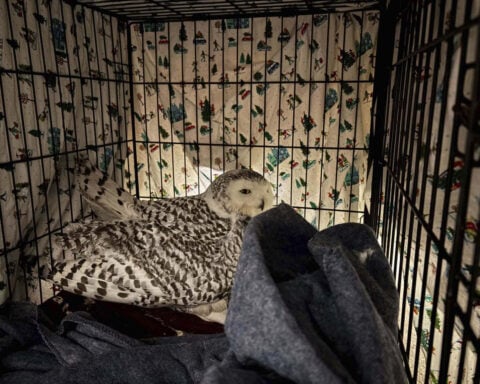A leading social psychologist who studies paraphilia, Dr. Mark Griffiths, has identified five of the most unusual fetishes he's ever encountered in his research, drawing from decades of academic study in the field.
Griffiths, professor of behavioral addiction at Nottingham Trent University, detailed his research findings in a new article for the Conversation, coinciding with the upcoming release of his book "Sexual Perversions and Paraphilias: An A-Z." His work examines conditions known as paraphilias, which involve intense responses to non-traditional stimuli.
"[Paraphilias] are typically accompanied by intense sexual arousal to unconventional or non-sexual stimuli such as enemas (klismaphilia), statues (agalmatophilia), teeth (odontophilia) and vomit (emetophilia)," wrote Griffiths.
Among the conditions Griffiths documented is vorarephilia, which gained public attention during the 2021 controversy surrounding actor Armie Hammer. The professor cited a notable case from Germany involving Armin Meiwes, who posted 60 online advertisements before meeting Bernd Jürgen Brandes in March 2002, who allowed Meiwes to bite off the tip of his penis so the two of them could eat the flesh together before stabbing Brandes to death — all of which they videotaped. The incident resulted in Meiwes receiving a life sentence for murder.
Griffiths' research includes what he identifies as the first published case study on eproctophilia, a condition where one is turned on by flatulence, focusing on a 22-year-old man from Illinois who told Griffiths, "This blew my mind [I] knew by simple biology that girls farted, but hearing that the girl I had been fawning over was capable of such a thing sparked a strange interest in me." The subject reported his condition emerged during school years, developing through specific social interactions that continued for two years during adolescence.
The professor's work also examines apotemnophilia, a condition involving attraction to amputation. According to Griffiths, while some individuals limit their interest to fantasy, others have attempted to convince medical professionals to perform surgical procedures. He noted that case studies indicate the condition does not involve pain-seeking behavior but eroticization of the healed amputated stump.
Research by Professor Mark Griffiths identifies three distinct categories of dacryphilia, a condition where individuals experience arousal from tears. His studies show that "compassionate" dacryphiliacs respond to feelings of empathy with those crying, while others engage with crying in dominant or submissive power dynamics. The third group, termed "curled lip" dacryphiliacs, focus specifically on the physical appearance of a protruding lower lip during crying episodes.
In one case study, Griffiths documented a 58-year-old Australian man whose salirophilic tendencies emerged during adolescence, when he sought out dusty and unclean locations. The subject reported that his attraction to uncleanliness extended to potential partners as an adult, though he noted challenges in finding others who shared his interests. He also noted being affected by television content, including the show Fear Factor.
"Researching paraphilias, even the most distasteful or criminal, is essential to help safeguard vulnerable groups. Research can also help minimize the discrimination faced by those with uncommon sexual interests, helping ensure their access to sexual health care and psychological support, which can be lacking." Griffiths said, emphasizing the medical necessity of his work.
The professor's research spans various manifestations of these psychological states, from mild cases to more severe instances that may require medical intervention. His work aims to provide healthcare providers with better patient support tools.
"To many people, paraphilias may seem bizarre or socially unacceptable, representing the extreme end of the sexual continuum – and in some cases, such as zoophilia (having sex with animals) and necrophilia (having sex with dead people), may be illegal," Griffiths wrote.

 India considers cutting personal income tax to lift consumption, sources say
India considers cutting personal income tax to lift consumption, sources say
 Russia arrests 4 suspects accused of plotting to kill top military officers on Ukraine's orders
Russia arrests 4 suspects accused of plotting to kill top military officers on Ukraine's orders
 Azerbaijan observes day of mourning for air crash victims as speculation mount about its cause
Azerbaijan observes day of mourning for air crash victims as speculation mount about its cause
 China's Xi sends condolences over Azerbaijan Airlines plane crash
China's Xi sends condolences over Azerbaijan Airlines plane crash
 UNIFIL urges timely Israeli pullout from south Lebanon under month-old truce deal
UNIFIL urges timely Israeli pullout from south Lebanon under month-old truce deal
 Japan's Nippon Steel extends closing date for U.S. Steel acquisition
Japan's Nippon Steel extends closing date for U.S. Steel acquisition
 BYD contractor denies 'slavery-like conditions' claims by Brazilian authorities
BYD contractor denies 'slavery-like conditions' claims by Brazilian authorities
 Kazakhstan's senate chief: cause of Azerbaijan Airlines plane crash unknown for now
Kazakhstan's senate chief: cause of Azerbaijan Airlines plane crash unknown for now
 Durant and Beal score 27 points each, Suns beat Nuggets 110-100 to close out Christmas slate
Durant and Beal score 27 points each, Suns beat Nuggets 110-100 to close out Christmas slate
 A leading social psychologist who studies paraphilia, Dr. Mark Griffiths, has identified five of the most unusual fetishes he's ever encountered.
A leading social psychologist who studies paraphilia, Dr. Mark Griffiths, has identified five of the most unusual fetishes he's ever encountered.






